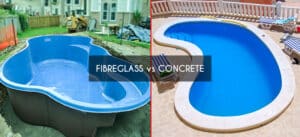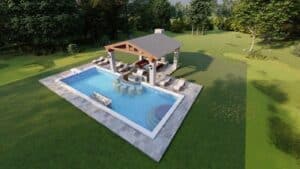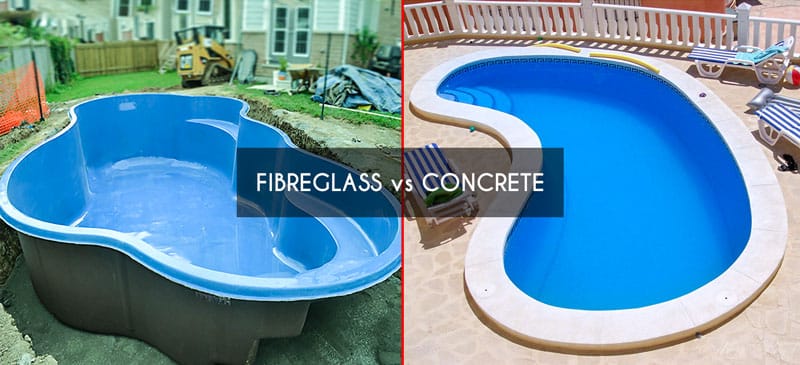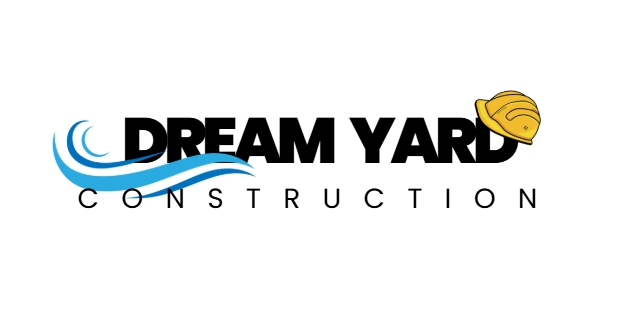
30-Second Answer
Winner for Orange County: Concrete pools (85% of installations)
Concrete Pros: Unlimited customization, any size/shape, handles slopes, better ROI
Fiberglass Pros: 2-3 week install, 30% less maintenance, smoother surface
Cost Difference: Similar initial price ($50,000-$100,000), different long-term costs
Bottom line: Orange County’s hillside properties, large lots, and luxury market favor concrete pools, but fiberglass works for specific situations.
Table of Contents
- Quick Comparison Overview
- Concrete Pool Deep Dive
- Fiberglass Pool Analysis
- Cost Comparison: Initial & Long-Term
- Installation Process & Timeline
- Maintenance Requirements
- Durability & Lifespan
- Orange County Specific Factors
- Impact on Property Value
- How to Choose: Decision Guide
- FAQs: Fiberglass vs Concrete Pools
Fiberglass vs Concrete Pools: Quick Comparison Overview
Understanding the fundamental differences between fiberglass vs concrete pools helps Orange County homeowners make an informed decision. When evaluating fiberglass vs concrete pools, consider factors like installation time, maintenance requirements, and long-term costs. Here’s a comprehensive comparison of all key factors:
Fiberglass vs Concrete Pools: Head-to-Head Comparison
| Factor | Fiberglass | Concrete (Gunite) | Winner |
|---|---|---|---|
| Initial Cost | $45,000-$85,000 | $50,000-$120,000 | Fiberglass (slight edge) |
| Installation Time | 2-3 weeks | 3-4 months | Fiberglass |
| Customization | Limited to 40 models | Unlimited options | Concrete |
| Maximum Size | 16′ x 40′ | Any size | Concrete |
| Maintenance Cost | $300-$500/year | $700-$1,200/year | Fiberglass |
| Chemical Usage | 30% less | Standard | Fiberglass |
| Surface Texture | Smooth gel coat | Varies by finish | Fiberglass |
| Lifespan | 25-30 years | 50+ years | Concrete |
| Resale Impact | +3-5% home value | +5-7% home value | Concrete |
| Slope Compatibility | Flat lots only | Any terrain | Concrete |
Concrete Pools in the Fiberglass vs Concrete Pools Debate
When comparing fiberglass vs concrete pools, concrete (gunite or shotcrete) represents 85% of Orange County pool installations. Their dominance in the fiberglass vs concrete pools discussion stems from unmatched versatility and alignment with OC’s premium real estate market.

Concrete Pool Advantages
- Complete Design Freedom: Any shape, size, or depth imaginable
- Hillside Installation: Perfect for OC’s sloped properties (40% of lots)
- Feature Integration: Easy addition of spas, waterfalls, beach entries
- Finish Options: Plaster ($4-7/sq ft), Pebble ($8-12/sq ft), Tile ($30-50/sq ft)
- Size Flexibility: From 200 sq ft plunge pools to Olympic size
- Longevity: 50+ years with proper maintenance and resurfacing
- Local Expertise: 200+ licensed contractors in Orange County
- Property Value: Adds 5-7% to home value in premium neighborhoods
Concrete Pool Disadvantages
- Long Installation: 3-4 months disrupts backyard use
- Higher Maintenance: Weekly brushing, more chemicals needed
- Rough Surface: Basic plaster can be abrasive on feet
- Resurfacing Required: Every 10-15 years ($5,000-$15,000)
- Algae Prone: Porous surface requires vigilant maintenance
- Higher Operating Cost: More filtration time, chemical use
Real Client Story: “The Chen family in Laguna Niguel needed a pool for their steep backyard. In their fiberglass vs concrete pools evaluation, only concrete construction could handle the 15-foot elevation change. Their infinity edge concrete pool cost $165,000 but transformed an unusable slope into a resort-style oasis that added $250,000 to their home value. The fiberglass vs concrete pools decision was clear for their property.”
Fiberglass Pools: The Other Side of Fiberglass vs Concrete Pools
In the fiberglass vs concrete pools debate, fiberglass pools arrive pre-manufactured and install quickly, but represent only 15% of Orange County installations. Understanding both sides of the fiberglass vs concrete pools comparison reveals specific limitations in our market.
Fiberglass Pool Advantages
- Fast Installation: Swimming in 2-3 weeks vs 3-4 months
- Low Maintenance: Non-porous surface resists algae growth
- Smooth Surface: Gel coat gentle on feet, no scrapes
- Chemical Efficiency: Uses 30% fewer chemicals annually
- Energy Savings: Better heat retention saves $50-100/month
- No Resurfacing: Gel coat lasts 20+ years without major work
- Flexibility: Handles minor ground movement without cracking
Fiberglass Pool Disadvantages
- Size Limits: Maximum 16′ wide due to highway transport
- Shape Restrictions: Only 30-40 models available nationwide
- No Customization: Can’t modify depth or add features later
- Delivery Issues: $5,000-$10,000 extra for OC’s narrow streets
- Repair Challenges: Gel coat repairs visible, color matching difficult
- UV Fading: California sun causes chalking after 10-15 years
- Installation Limits: Won’t work on slopes over 3 feet
- Fewer Contractors: Only 20 certified installers in Orange County
Orange County Delivery Challenge
Fiberglass pools ship from Texas or Tennessee on oversized loads. California’s bridge heights, narrow canyon roads, and HOA gate restrictions eliminate many properties. Crane costs add $3,000-$8,000 when street access is blocked.
Fiberglass vs Concrete Pools Cost Comparison: Initial & Long-Term
The fiberglass vs concrete pools cost analysis reveals important differences. While initial prices for fiberglass vs concrete pools appear similar, the 10-year total cost of ownership shows significant variations between these pool types:
Initial Installation Costs
| Pool Type & Size | Fiberglass Cost | Concrete Cost |
|---|---|---|
| Small (12′ x 24′) | $45,000-$55,000 | $50,000-$65,000 |
| Medium (16′ x 32′) | $55,000-$75,000 | $65,000-$85,000 |
| Large (16′ x 40′) | $75,000-$85,000 | $85,000-$120,000 |
| With Spa | Limited options | Add $8,000-$15,000 |
| Delivery/Access | +$5,000-$10,000 | Standard pricing |
10-Year Total Cost Analysis
Fiberglass Total: $60,000-$95,000
Concrete Total: $75,000-$140,000
Key Insight: Fiberglass saves $15,000-$45,000 over 10 years
However, concrete pools add $20,000-$40,000 more home value in Orange County’s luxury market, often offsetting higher costs.
Annual Operating Costs
| Expense Category | Fiberglass/Year | Concrete/Year |
|---|---|---|
| Chemicals | $200-$300 | $300-$500 |
| Electricity | $400-$600 | $500-$800 |
| Maintenance Service | $900-$1,200 | $1,200-$2,400 |
| Repairs (averaged) | $100-$200 | $300-$500 |
| Total Annual | $1,600-$2,300 | $2,300-$4,200 |
Installation Process & Timeline
The dramatically different installation processes affect your property disruption and swimming timeline:
Fiberglass Installation (2-3 Weeks Total)
- Week 1 – Excavation: Dig to manufacturer specifications
- Week 1 – Base Prep: Level with sand/gravel base
- Week 2 – Delivery: Crane places shell (1 day)
- Week 2 – Plumbing: Connect equipment and pipes
- Week 2-3 – Backfill: Carefully pack around shell
- Week 3 – Decking: Pour concrete deck
- Week 3 – Fill & Balance: Ready to swim!
Concrete Installation (3-4 Months Total)
- Week 1-2 – Excavation: Dig and shape pool cavity
- Week 3 – Steel: Install rebar framework
- Week 4 – Gunite: Spray concrete shell
- Week 5-8 – Curing: Critical strength development
- Week 9-10 – Tile/Coping: Install waterline tile
- Week 11 – Plaster: Apply interior finish
- Week 12 – Equipment: Install pumps and filters
- Week 13-16 – Decking: Complete surrounding area
Maintenance Requirements: Fiberglass vs Concrete Pools
Understanding maintenance differences in fiberglass vs concrete pools helps budget your time and money. The maintenance comparison between fiberglass vs concrete pools shows dramatic differences in both effort and cost:
Fiberglass Maintenance Schedule
- Daily: Run filter 6-8 hours (vs 8-10 for concrete)
- Weekly: Test/adjust chemicals (30 minutes)
- Monthly: Clean filter, check equipment
- Annually: Professional inspection ($200-$300)
- Never needed: Acid washing, resurfacing, re-tiling
Concrete Maintenance Schedule
- Daily: Run filter 8-10 hours minimum
- Weekly: Brush walls, test chemicals (60-90 minutes)
- Monthly: Deep clean, inspect for cracks
- Every 3-5 years: Acid wash ($500-$800)
- Every 10-15 years: Resurface ($5,000-$15,000)
- Every 20 years: Re-tile waterline ($2,000-$5,000)
Durability & Lifespan
Both pool types offer excellent durability with different aging characteristics:
| Durability Factor | Fiberglass Performance | Concrete Performance |
|---|---|---|
| Overall Lifespan | 25-30 years | 50+ years (with resurfacing) |
| Surface Durability | Gel coat lasts 15-20 years | Resurface every 10-15 years |
| Earthquake Resistance | Flexes without cracking | May crack, repairable |
| UV Resistance | Fades/chalks in CA sun | Minimal UV impact |
| Stain Resistance | Excellent | Varies by finish |
| Warranty | 15-25 years structural | 10 years typical |
Orange County Specific Factors
Orange County’s unique characteristics strongly influence pool type selection:
Why 85% Choose Concrete in Orange County
- Hillside Properties: 40% of OC pools built on slopes
- Large Lot Sizes: Average pool exceeds fiberglass maximum
- Luxury Market: Custom features expected in $1M+ homes
- HOA Requirements: Many demand specific aesthetics
- Delivery Challenges: Narrow canyon roads, tight gates
- Property Values: Concrete adds more resale value
Where Fiberglass Works in OC
- Flat neighborhoods in Huntington Beach, Westminster
- Rental properties prioritizing low maintenance
- Smaller yards in Costa Mesa, Garden Grove
- Quick installation for summer deadline
- Budget-conscious buyers under $60,000
Impact on Property Value
Pool type significantly affects Orange County property values:
Property Value Impact
Concrete Pool: Adds 5-7% to home value
Fiberglass Pool: Adds 3-5% to home value
Critical Factor: Luxury buyers expect custom concrete
In Newport Beach, Laguna Beach, and Irvine, fiberglass pools can actually deter high-end buyers who view them as “cutting corners.”
How to Choose Between Fiberglass vs Concrete Pools
Making the right choice in the fiberglass vs concrete pools debate depends on your specific situation. Use this fiberglass vs concrete pools decision guide to determine which pool type best fits your Orange County property:
Choose Fiberglass If You Have:
- Flat lot with easy access
- Need for quick installation (under 1 month)
- Strong preference for low maintenance
- Budget under $60,000
- Standard size requirements (under 16′ x 40′)
- Plans to move within 5-10 years
Choose Concrete If You Have:
- Sloped or challenging terrain
- Specific design vision or features
- Need for large or deep pool
- Long-term ownership plans (10+ years)
- Home value over $800,000
- HOA with aesthetic requirements
FAQs: Fiberglass vs Concrete Pools
Which pool type is better for saltwater systems in the fiberglass vs concrete pools debate?
In the fiberglass vs concrete pools comparison for saltwater, fiberglass excels. The non-porous gel coat resists salt damage completely. Concrete pools can use saltwater but require special plaster and more frequent resurfacing (every 7-10 years vs 10-15 with chlorine). If saltwater is a priority in your fiberglass vs concrete pools decision, fiberglass offers clear advantages.
Can I add a spa to either pool type when considering fiberglass vs concrete pools?
This is a key difference in the fiberglass vs concrete pools comparison. Concrete pools easily accommodate attached spas at any time for $8,000-$15,000. Fiberglass pools cannot be modified after installation – you must choose a model with integrated spa initially, limiting options. When weighing fiberglass vs concrete pools, consider future spa desires.
How do earthquakes affect each pool type?
Fiberglass pools flex during earthquakes, typically avoiding damage. Concrete pools may develop cracks but are fully repairable. Both require proper engineering for seismic zones. Major ground liquefaction affects both equally. Overall, earthquake risk shouldn’t determine pool type choice in Orange County.
Which is safer for children?
Fiberglass wins for young children with its smooth, non-abrasive surface preventing scraped knees and toes. Many models include built-in safety ledges. However, concrete pools offer more safety customization options like beach entries for toddlers and proper diving depths for older kids.
What about energy efficiency?
Fiberglass pools use 30% less energy due to better insulation and shorter filtration requirements. This saves $50-$100 monthly on electricity. The smooth surface also requires less chemical circulation. For eco-conscious homeowners, fiberglass offers measurable environmental benefits.
Can fiberglass pools handle Orange County’s sun?
California’s intense UV exposure causes gel coat fading and chalking after 10-15 years. While structurally sound, the surface becomes dull and rough. Gel coat restoration costs $3,000-$5,000. Concrete pools with proper chemistry show minimal UV degradation.
Which pool type do contractors prefer installing?
Most Orange County contractors prefer concrete due to higher profit margins and established expertise. Only 20 contractors are certified for fiberglass installation vs 200+ for concrete. This limited competition can increase fiberglass installation costs and reduce negotiating power.
What if I need to remove the pool later?
Fiberglass pools can theoretically be removed intact and resold (rare, but possible). Removal costs $8,000-$12,000. Concrete pools require demolition at $10,000-$15,000. Both need permits. Consider this if you’re unsure about long-term pool ownership.
Get Expert Pool Type Consultation
Call (714) 777-3479
Free property evaluation to determine your best pool option!
We install both types – honest, unbiased recommendations
Dream Yard Construction – CSLB License #968962
Why Trust Dream Yard Construction?
- Install both fiberglass and concrete pools – no sales bias
- 30+ years serving Orange County homeowners
- Free site evaluation for pool type suitability
- Certified for both installation types
- Transparent pricing for accurate comparison
- References available for both pool types
Verify our credentials at CSLB – Swimming Pool Contractors. Learn more About Dream Yard Construction. For permit information, visit Orange County Permit Fees.


